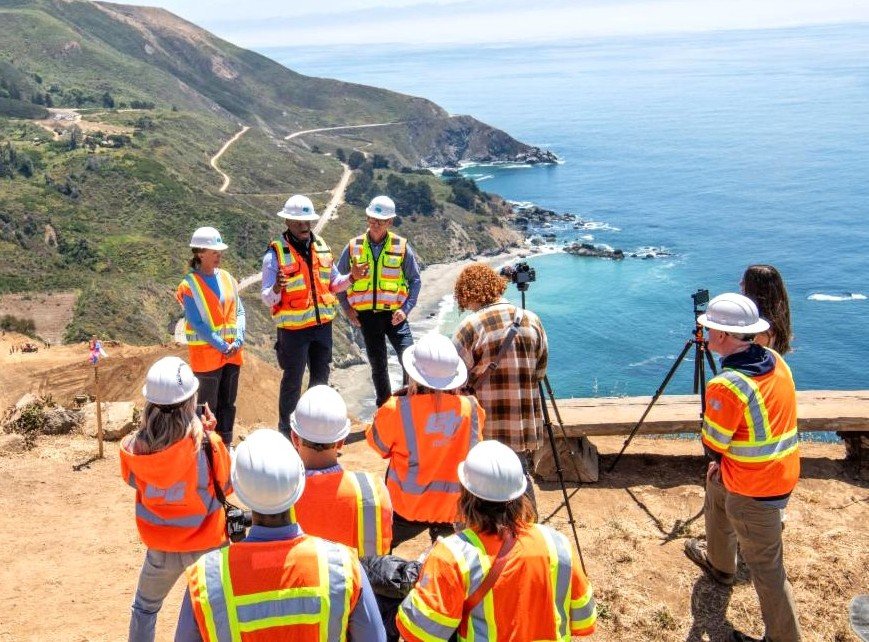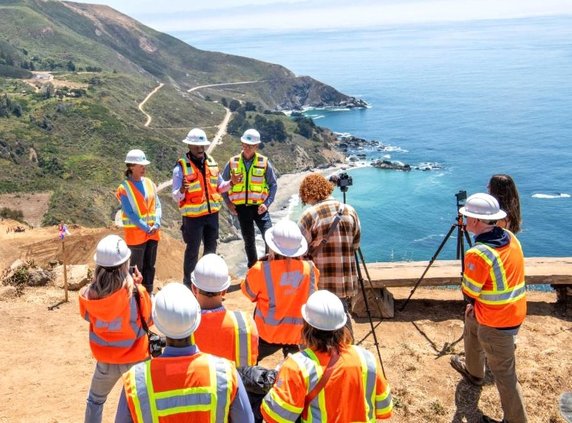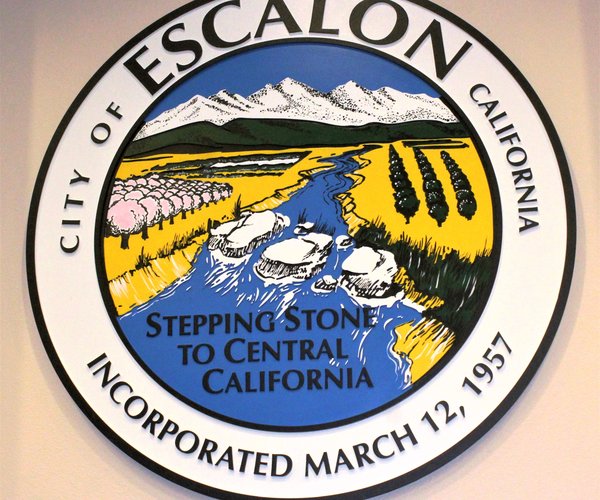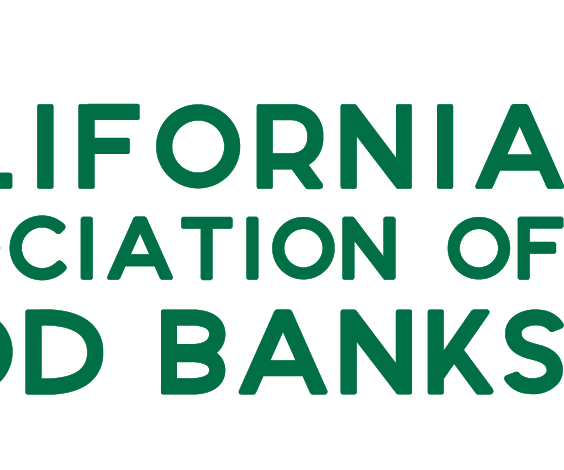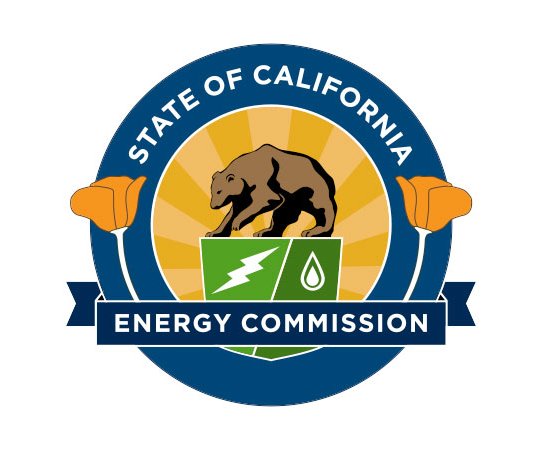California Transportation Secretary Toks Omishakin reaffirmed the state’s commitment to the Big Sur community as he met with local leaders, business owners and tourism officials at Highway 1 in Monterey County this past week to tour ongoing repairs atop Regent’s Slide, located 40 miles south of Carmel on the Big Sur coastline.
“California and Governor Gavin Newsom remain fully committed to reopening Highway 1 at Regent’s Slide as quickly and safely as possible,” said Secretary Omishakin. “Visiting the project site reinforced my confidence that we will restore access to this majestic section of coastline to people who have endured hardships and demonstrated incredible patience. Highway 1 belongs to them and is more than just a road, it is part of California’s rich culture.”
Regent’s Slide, which originated 450 feet above the roadway, occurred on Feb. 9, 2024, and has subsequently resulted in the closure of a 6.8-mile segment of Highway 1.
The combination of Regent’s Slide and a previously cleared slide six miles south, has prevented through travel on the Big Sur coast since Jan. 15, 2023. Caltrans, which is repairing the section, will update the public and local business owners with an estimated date for the reopening of Regent’s Slide by the end of summer.
Travelers from Northern California can still access the many historic bridges, waterfalls, restaurants and lodging amenities along the Big Sur coast. Travelers from Southern California can reach the communities of Lucia, Gorda, Ragged Point, San Simeon and Cambria via Highway 1.
“On behalf of California’s tourism industry, we extend sincere appreciation to Caltrans and state transportation leadership for their around-the-clock efforts to reopen Highway 1 in southern Monterey County,” said Visit California President and CEO Caroline Beteta. “The vast majority of Highway 1 remains open and accessible, and travelers can have the full Big Sur experience whether driving in from the north or exploring the coastline of San Luis Obispo County from the south. No matter how they approach it, road trippers can take in the route’s awe-inspiring views, explore its charming seaside towns and make countless unexpected discoveries along the way.”
Portions of the Regent’s Slide repair area remain geologically active, moving one foot or more per day. Data collected by monitoring instruments and visual observation is analyzed to make informed decisions about slope stability, worker safety and repair design assessments.
When a new landslide developed above and below the project work area last August, Caltrans engineers not only enlarged the excavation footprint but also introduced the innovative use of remote equipment to help safely remove displaced landslide material. This approach allowed them to efficiently remove the displaced landslide material while keeping workers safe. To execute another key step in restoring stability to the damaged area, crews lowered rock dowels into vertical shafts drilled deep into the slope. This engineering strategy allowed other phases of the repair to begin and provided a safer environment for workers. To date, the slope has been reinforced with 20 miles of steel bars and eight million pounds of cement, enough cement to fill 533 trucks and enough steel to stretch halfway to Carmel.
